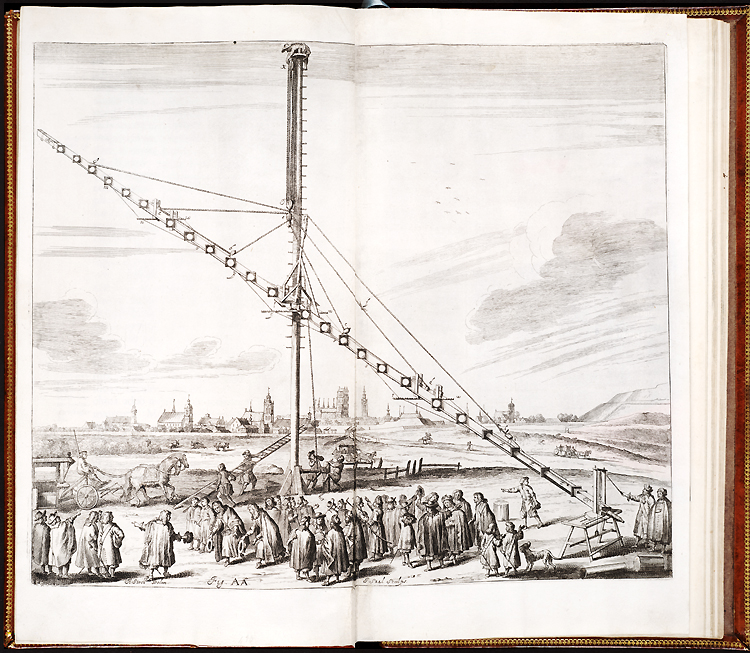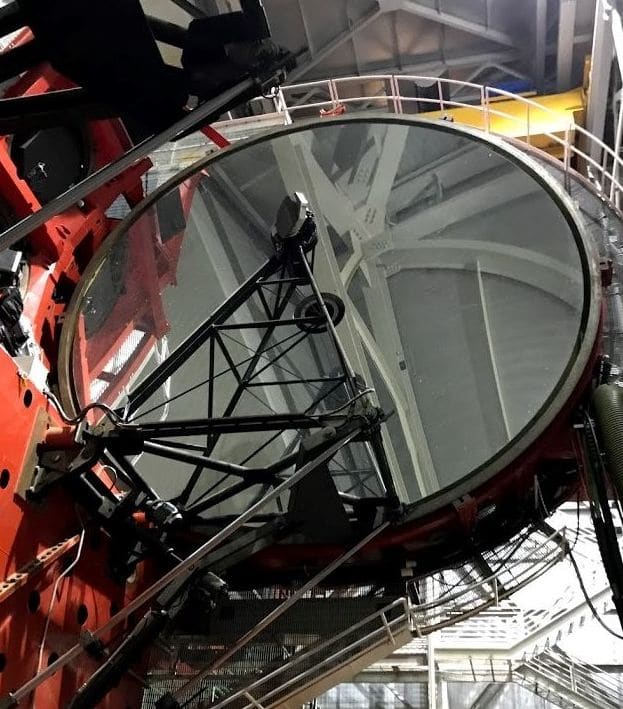Telescopes serve as a gateway to discovery. They capture the imagination of children and professionals alike. The development of telescopes has led to countless discoveries, both terrestrial and extraterrestrial.
Today’s post is sponsored by Gentec EO – providing solutions for all your laser beam measurements
Refractive Telescopes
While it is impossible to definitively assign the inventor of the telescope, Hans Lipperhey (or Lippershey) was the first to patent it. Lipperhey was a Dutch spectacle maker. His simple telescope was comprised of two lenses. One concave, for the eyepiece, and one convex, for the objective. It is reported his design had a 3x magnification.
Galileo Galilei improved upon the telescope patented by Lipperhey. Galileo had heard of Lipperhey’s invention, though not of Lipperhey’s exact design. Galileo’s telescope was made of a convex objective and a concave eye lens. Over the next couple years, he refined his telescope over several iterations, improving the magnifying power from 10x to 30x. He used his telescopes to survey the sky, making numerous important astronomical discoveries.
Johannes Kepler built off Galileo and Lipperhey’s telescope designs. He created his Keplerian telescope in 1611 that sported both a convex objective and eyepiece. Kepler’s telescope could achieve greater magnifying powers than Galileo’s design, but at the expense of longer focal lengths.
Achromatic Doublet
The Doublet’s Invention
Refractive telescopes got very long during this time. In fact, in 1645, Polish-born Johannes Hevelius built the largest telescope in the world. The objective had a diameter of 120 mm with the telescope itself boasting a 46m focal length. The obscene length of these telescopes is partially attributed to the effort to increase magnification while minimizing chromatic aberration. Even Newton believed that chromatic aberration was inherent to lens systems and could not be overcome with lenses. This, however, was found to be untrue after the creation of the achromatic doublet. The achromatic doublet could combat the dispersion of different colored wavelengths as white light bends and separates while traveling through a lens.

Sketch of Hevelius’ telescope. Courtesy of UNESCO.
Chester Moore Hall, though a barrister by profession, dabbled in optics. He noted how the eye was basically a set of lenses of different refractive indices, but humans do not see fringes characteristic of chromatic aberration. In 1729, Hall was able to mimic this effect using a positive and negative lens pair. The negative lens was made of highly dispersive glass and the positive lens was made of lowly dispersive glass. He wanted to keep this discovery a secret and contracted out the fabrication of the individual lenses to two separate opticians. As fate would have it, both opticians subcontracted the same person—George Bass—to make the lenses. Bass figured out the lenses were meant to fit together given their opposing radii of curvature and discovered the value that Hall had seen in the lens combination.
Achromatic Doublet Dispute
Bass told others about the lens. One of those he told was John Dollond. Dollond was intrigued and improved upon the achromatic doublet design. John Dollond died in 1761, but his son, Peter, continued in his footsteps. He created several commercially available telescopes using the achromatic doublet. Dollond went on to patent the achromatic doublet. Hall tried to challenge Dollond’s claim. The court supported Dollond, resulting in a landmark decision in patent law. The court gave it to Dollond favoring ones who publicize their knowledge for the benefit of others over someone like Hall who kept the invention hidden away. Dollond’s telescopes became so popular that colloquially referring to a one’s telescope as a Dollond became common. Peter also created the apochromatic lens, which corrected for red, green, and blue wavelengths instead of just red and blue like the achromatic doublet.
Today, reflective telescopes are more popular than refractive telescopes – to be discussed in the next section. The largest refractive telescope, built in 1897, is housed in the Yerkes Observatory in Williams Bay, Wisconsin. Its primary lens has a diameter of 1.02 meters. It is no longer used, though there are efforts underway to restoring the observatory.
Reflective Telescopes
Newton is typically credited with the first practical reflecting telescope in 1668. Others, Galileo included, had already proposed the idea of reflective telescopes. James Gregory had suggested his Gregorian telescope in 1663 with a parabolic primary mirror containing a hole in the middle allowing light to pass to an elliptical secondary mirror. The Newtonian Telescope featured a concave primary mirror and a slanted flat mirror that directed the image through an eyepiece to view. In 1672, the Cassegrain telescope was designed. It featured a convex mirror that would reflect light back through the primary mirror’s hole.
Using reflective elements instead of refractive ones solves the problem of chromatic aberration. Reflective elements also did not suffer from poor glass quality that plagued some telescope lenses at the time. While the reflecting telescope had some advantages, refracting telescopes still dominated until technology improved. In Newton’s time, silvered mirrors were not of high enough quality to be used in telescopes, and early telescopes used mirrors made of a copper-tin alloy. It was also difficult to shape the mirrors to the proper curvature, especially since mirrors by nature are twice as sensitive as a refractive element of the same type.
Modern Day Telescopes
The Ritchey- Chrétien telescope was designed in 1910. It features parabolic mirrors that correct for both coma and spherical aberrations and provides a wide field of view. The telescope’s drawbacks include being susceptible to astigmatism and field curvature. Even still, the Ritchey-Chrétien setup is used for most professional research telescopes including the Hubble Space Telescope and the Keck telescopes.
With more modern advancements in optical design and adaptive optics, image quality has improved. Telescope mirrors are now produced thinner and larger than before.

One of the primary mirrors for the Large Binocular Telescope. Courtesy of Kayla Filipek.
The Keck telescopes feature numerous hexagonal mirrors as pieces that fit together to create one large mirror. The Giant Magellan Telescope (presently under construction) features adjustable, slightly deformable single-piece mirrors for improved image quality. The underside of the mirrors also feature a honeycomb patterned support system. Currently, the largest reflective telescope in operation in the world (by optical aperture) is the Large Binocular Telescope located on Emerald Peak in Stafford, Arizona.
